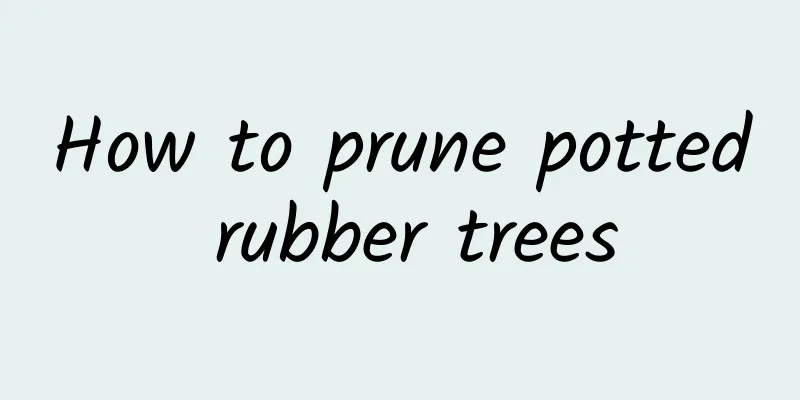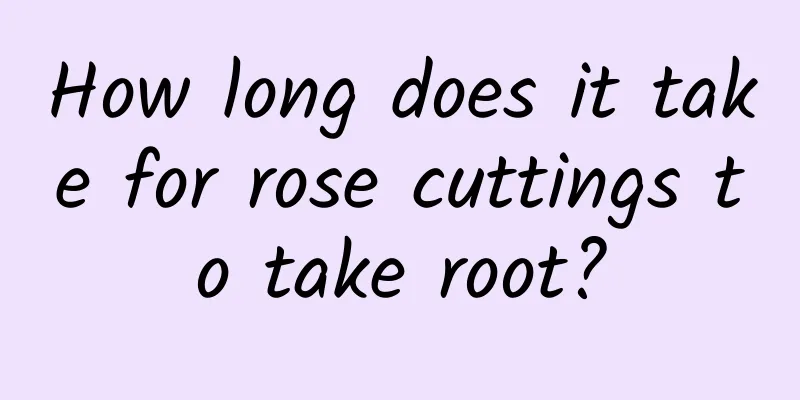How to prune potted rubber trees

Pruning time for potted rubber treesTheoretically, as long as the climate is suitable, potted rubber trees can be pruned all year round. However, the correct way is to pinch or thin out the trees in spring, cut side branches in summer, and avoid heavy pruning in winter. Prune yellow or diseased leaves in time. Do not prune during the rainy season because the wounds will be easily infected by bacteria due to the high humidity. How to prune potted rubber trees1. Topping When the potted rubber tree grows to 60 cm in height, you can start to pinch the top of the tree. Use scissors to cut off the top branches and buds 40 cm above the ground, and allow it to sprout new side branches 2-3 side buds below the top. This will allow it to grow horizontally and prevent the plant from being too tall. 2. Shorten Potted rubber trees can be pruned in spring by cutting off the slower growing side branches, allowing the rubber tree to sprout new branches at the side bud position. Pruning may affect the appearance at the time, but it is beneficial to the growth of the rubber tree. The sprouting of new branches mainly depends on such means. 3. Thinning Potted rubber trees grow vigorously in the summer, and their branches and leaves may become dense, affecting the light transmittance between the branches and leaves, and making diseased and weak branches more likely to appear. At this time, you can use scissors to cut off the dense branches, old branches among the crossed branches, and weak branches to make the branches and leaves sparse and orderly. 4. Bud carving If there are fewer branches and leaves on the main branches of the potted rubber tree, you can make it sprout more side buds by carving buds. In April, use a knife to make 1-2 horizontal wounds 1 cm above the place where you want to promote budding. New buds will sprout below in about 20 days, and after a while, 3-4 side branches will grow out. 5. Support buds If a potted rubber tree grows too many side buds, it will consume more nutrients, thus affecting the growth of the main trunk and the overall appearance. Therefore, when there are many side branches, you can break off the newly sprouted side buds to concentrate the nutrients on the growth of the main trunk, thereby promoting its overall appearance. |
<<: How to deal with dahlias after they bloom
>>: How to deal with gladiolus after flowering
Recommend
Pineapple growth environment conditions and characteristics
Pineapple Growth Environmental Conditions and Req...
How to make the leaves of Tiger Piranha greener and what to do if the tips of the leaves turn yellow
1. How to make the leaves of Tiger Pilan greener ...
How to keep radish seeds and how to collect seeds
How to save radish seeds Radish seeds come from i...
How to grow Jade Plants in spring
1. Appropriate amount of water Spring is an impor...
How to prune a small banyan tree
When to prune the banyan tree Small banyan trees ...
Maintenance method of baby's breath
Gypsophila paniculata , known for its rich colors...
How to trim excess leaves from a bird of paradise?
Bird of paradise requires plenty of light, at lea...
What should you pay attention to when growing flowers at home in spring?
Although flowers are beautiful, they need care. O...
How much chickpeas yield per mu
Chickpea yield per mu Chickpea is a relatively co...
Corn sowing time and method
Corn is an annual herbaceous plant of the genus Z...
Jasmine cultivation methods and precautions
1. Temperature Because jasmine is native to India...
Is tomato a fruit or a vegetable? Is it a cooling or warming substance?
1. Is it a fruit or a vegetable? It is a vegetabl...
What soil should be used to grow Oxalis
The soil formula most commonly used by flower lov...
How to care for orange trees
1. Breeding environment 1. Soil: Orange trees nee...
Breeding methods and precautions of Little Red Coat
1. Soil considerations Sandy soil is the best cho...









